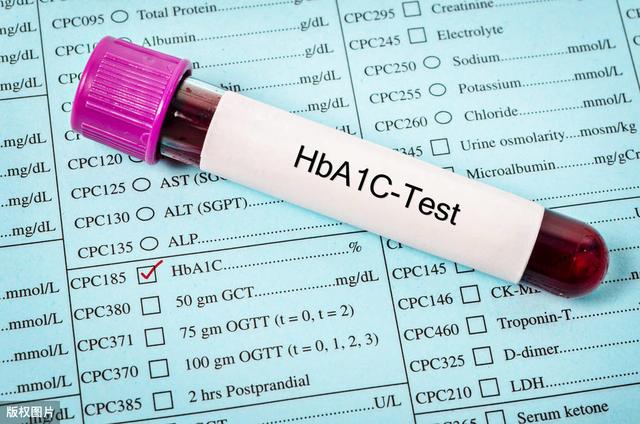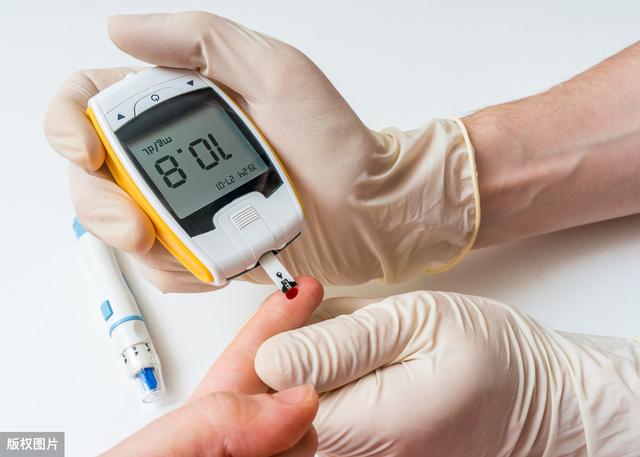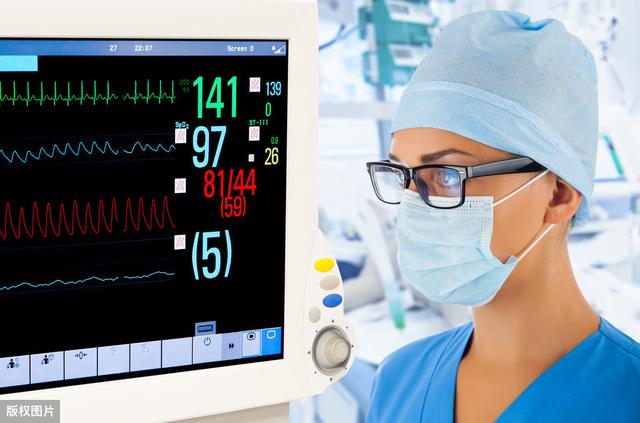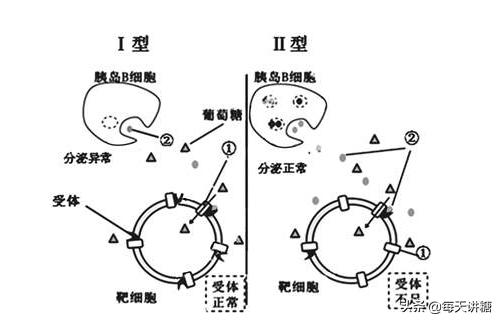Is fulminant type 1 diabetes serious?
In general, diabetic patients tend to have both high blood glucose and glycated hemoglobin (HbA1c); however, in recent years, there has been a diabetic patient in whom tests have revealed that theBlood sugar is super high, but HbA1c is roughly normal or only mildly elevated; it is fulminant type 1 diabetes.These patients tend to have an acute onset of disease, with almost complete loss of pancreatic islet function but negative for diabetes-related antibodies (e.g., serum glutamic acid decarboxylase antibodies, islet cell antibodies, insulin antibodies, etc.).
In contrast to typical type 1 diabetes, patients with fulminant type 1 diabetes haveThe age of onset, short duration, and degree of ketoacidosis are severe, and serum pancreatic enzymes are elevated in most patients.In addition, most patients with fulminant type 1 diabetes have flu symptoms or gastrointestinal symptoms 2 weeks prior to onset of illness, and women may have a rapid onset of illness during pregnancy or postpartum.
Patients with typical type 1 diabetes usually have a small amount of residual islet function at the onset of the disease, and thePatients with fulminant type 1 diabetes mellitus have almost complete loss of insulin secretion at the onset of the diseaseThe patients have an acute onset and rapid progression of disease, and most of them have severe hyperglycemia, ketoacidosis and electrolyte disorders, with an aggressive prognosis. Without timely treatment, patients often die within a short period of time.

diagnostic criteria
Previously, it was thought that one of the characteristics of fulminant type 1 diabetes was negative pancreatic autoantibodies, but in recent years it has been found that patients can be accompanied by autoantibodies, and therefore the presence or absence of negative antibodies is no longer used as a basis for the diagnosis of fulminant type 1 diabetes. The current diagnostic criteria for fulminant type 1 diabetes are:
① The onset is rapid;
(ii) A history of antecedent infection prior to onset of illness, such as fever, upper respiratory tract infection, or gastrointestinal symptoms;
(iii) Hyperglycemic symptoms can rapidly progress to ketoacidosis within 1 week of presentation;
④ Separation of blood glucose from HbA1c, i.e., random blood glucose ≥16.0 mmol/L (mostly more than 30 mmol/L) and HbA1c <8.5% at onset;
⑤ Extremely poor pancreatic β-cell function with fasting serum C-peptide <0.3 ng/ml and post-stimulation serum C-peptide <0.5 ng/ml;
(6) Most patients have impaired exocrine pancreatic secretion, with varying degrees of elevated levels of pancreatic amylase, pancreatic lipase, and elastase.
In short, the diagnostic elements of fulminant type 1 diabetes mellitus include two main points: mode of onset and islet function. Therefore, the diagnosis of fulminant type 1 diabetes mellitus should be considered whenever a patient with ketoacidosis is encountered who has hyperglycemia and a near-normal HbA1c.

Therapeutic principles
Once a patient is suspected of fulminant type 1 diabetes, treatment should be started immediately. First, for the ketoacidosis that the patient has developed, active rehydration, intravenous infusion of small-dose insulin, correction of electrolyte disorders and acid-base imbalance, and prevention of infection should be given; the management of abnormal pancreatic exocrine secretion (i.e., elevated pancreatic enzymes) is similar to that of pancreatitis, and it usually takes 2 to 3 weeks for gradual return to normal.
During the course of treatment, patients need to be closely monitored for blood glucose, ketone bodies, liver and kidney function, pancreatic enzymes, muscle enzymes, and electrocardiograms. Since the islet function of patients with fulminant type 1 diabetes mellitus is essentially complete failure, such patients require lifelong use of insulin.

prognosis
Compared with classical type 1 diabetes, fulminant type 1 diabetes is more aggressive and more prone to microvascular complications, and therefore should be highly emphasized by clinicians. Timely detection and correct diagnosis and treatment are crucial to the prognosis of patients.
I recently admitted several type 1 diabetics, ranging in severity, but one of the young girls had fulminant diabetes.
As you know from the name, this disease progresses very quickly and is certainly more serious. After timely and effective treatment, the little girl's condition improved significantly and her blood sugar gradually stabilized.
What is fulminant type 1 diabetes
Diabetes mellitus of the fulminant type 1 is a subtype of type 1 diabetes mellitus that was categorized in 2000 and classified as idiopathic type 1 diabetes mellitus. This disease has a very rapid onset and can present with elevated pancreatic enzymes and the absence of islet-associated antibodies.
The pathogenesis of fulminant type 1 diabetes is unclear and may be related to viral infections and autoimmunity. In women, the onset of the disease is mostly in the middle or late stages of pregnancy or after delivery, and is considered to be related to pregnancy.
Violent type 1 diabetes mellitus progresses relatively quickly, usually within 1 week of the onset of symptoms of increased blood glucose may progress to ketoacidosis or ketoacidosis, and is diagnosed with high blood glucose, but with a glycosylated hemoglobin of less than 8.5% and a low level of C-peptide in the blood. Some patients may develop fever, upper respiratory tract infection, and gastrointestinal infection.
The high blood glucose but relatively low glycosylated hemoglobin determines the very short course of the disease, the islet cells are severely damaged in a very short period of time, and there is a complete loss of islet function. The difference from normal type 1 diabetes is that his antibody levels are negative. And usually positive islet-related antibodies are the main diagnostic feature of type 1 diabetes.
Much of fulminant type 1 diabetes has an adult onset and can be combined with functional impairment of multiple organs, including the liver, kidneys, heart, transverse muscle, and exocrine pancreas.
Treatment of fulminant type 1 diabetes
The treatment of this disease needs to take active and effective measures as soon as possible, in clinical treatment diet to insulin therapy, and intravenous rehydration, close monitoring of blood glucose, hematology, electrolytes, liver and kidney function.
In the future, the patient will need lifelong insulin therapy. Because of the complete loss of islet function, there is usually no "honeymoon period" for such patients.
To summarize:
Violent type 1 diabetes mellitus is a new subtype of type 1 diabetes mellitus, which may be the result of a combination of genetic, environmental and immune factors, with a relatively rapid onset, metabolic disorders, rapid progression of the disease, and a relatively poor prognosis, so clinicians should pay great attention to timely screening, diagnosis, and treatment is very important.
I'm Dr. Sun, pay attention to Dr. Sun talk about sugar, continue to learn more quality health knowledge, help please like, have questions please leave a message, will reply!
Go to the hospital.
Hi, I'm happy to answer this question for you.
Fulminant type 1 diabetes (FTlD) is a new subtype of diabetes mellitus first reported by Japanese scholar Imagawa et al. in 2000, and is tentatively categorized as Type 1B.
Violent type 1 diabetes mellitus is a relatively rare disease, and is most often preceded by prodromal symptoms such as upper respiratory tract infections or gastrointestinal distress in the l to 2 weeks before the onset of the disease.

The clinical manifestations of the patient are markedly elevated blood glucose, with typical symptoms of three more and one less, even with diabetic ketosis or diabetic ketoacidosis.
The only difference between patients with fulminant type 1 diabetes and those with normal diabetes is that patients with fulminant type 1 diabetes have a completely normal glycosylated hemoglobin check, which is indicative of a relatively short onset of the disease.
In addition, patients with fulminant type 1 diabetes mellitus were negative for glutamic acid decarboxylase antibodies, islet cell antibodies, and insulin antibodies.
Freak type 1 diabetes (FT1D) has a rapid onset, is aggressive, and has a poor prognosis. There are no statistics on the mortality rate of this disease.
Patients with FT1D have almost complete destruction of β-cells and far poorer islet function than type 1A, and no recovery of p-cell function has been reported to date. The incidence of severe hypoglycemia is also higher due to the extremely poor β-cell function in this disease.
So, fulminant type 1 diabetes is more serious.
It is the disease that suffers, especially the endocrine, which leads to too many complications, so prevent this disease from occurring and developing!The outbreak of type 1 diabetes has a very great impact on people's bodies, if not treated in time, so that the disease gradually spreads and develops, will cause great harm to all aspects of the body, may involve the patient's nerves and other aspects of the long term out of the case of high blood glucose, the spirit of the top of the cells and fibers may produce lesions, which may result in numbness of the body, the usual sensory loss, but also may be diarrhea, constipation and urinary retention. Diarrhea, constipation and urinary retention may occur, seriously jeopardizing the body and life. The quality of life is seriously jeopardized, so we need thorough treatment.
When suffering from outbreak type 1 diabetes, we need to pay extra attention, sometimes viral infection is also a cause of the disease, many people when there is a viral infection, some abnormalities within the body, can cause diabetes to occur. So you need to pay attention to stay away from the disease in your life. At the same time constantly enhance their own resistance, eat more fresh vegetables and fruits, supplement vitamins, and at the same time in accordance with the doctor's arrangements for regular medication, timely control of the disease, to prevent the body from causing great harm.
So people live by being healthy and happy, don't do things that hurt your body, I hope this helps!
This question and answer are from the site users, does not represent the position of the site, such as infringement, please contact the administrator to delete.